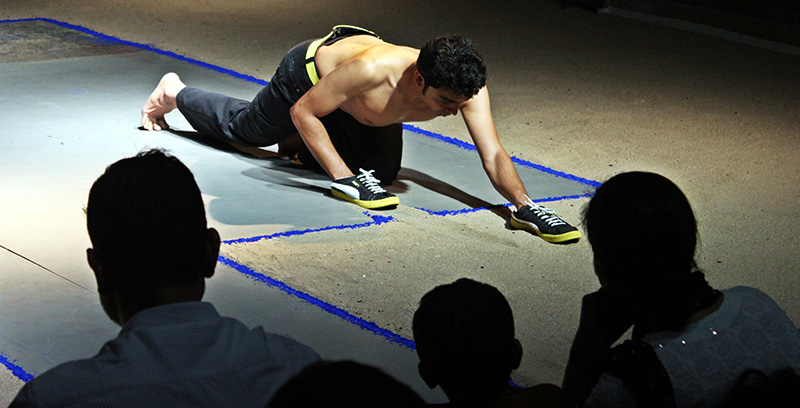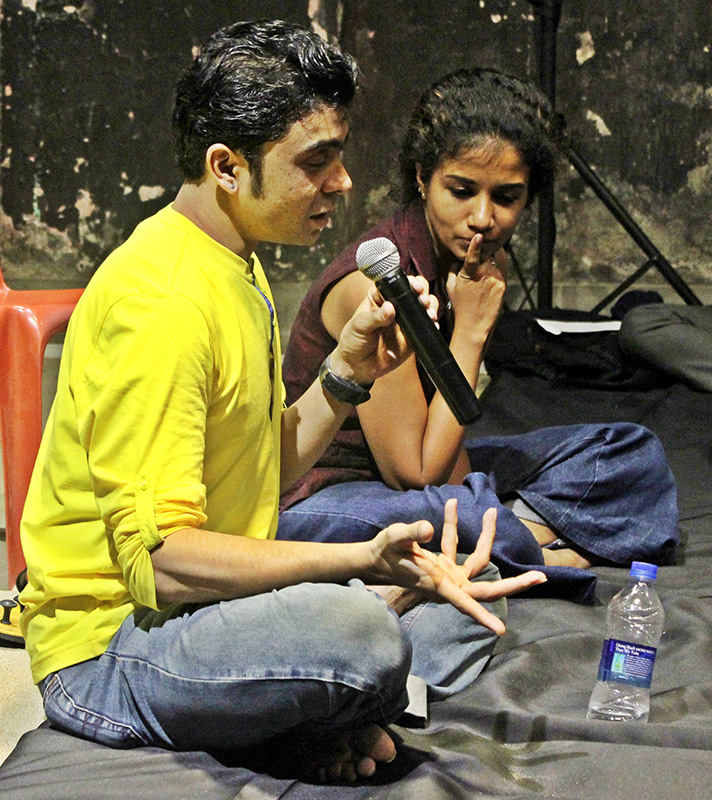Vikram Iyengar





Grant Period: Over eight months
An accomplished classical dancer who has also made forays into movement and theatre, Vikram brings into this project critical questions about his own practice in Kathak by challenging the binary notions of the ‘classical’ and ‘contemporary’. This grant supports Vikram to collaborate with Chennai-based contemporary dancer and choreographer Preethi Athreya towards creating a performance that investigates into and pushes the boundaries of the classical idiom of Kathak.
‘Indian classical dancers are often seen as being stuck in a time warp, restricted by codified forms and a culture of repetition of the old rather than creation of the new’, says Vikram in his proposal. This perception of the classical has often distanced dancers as well as audiences. Many classical dancers, after years of training, often abandon their classical training in search of a more contemporary, personal movement language; several others question the boundaries that codification places on them. However, Vikram points out to how both these responses stem from a rejection of classical dance.
On parallel lines, Vikram critically questions the contemporary too. While the ‘classical’ is always required to conform to codes of form and tradition, the ‘contemporary’ generally escapes these rigidities. It is often taken for granted as inherently being genre-defying and relevant to present times. These frictions, Vikram points out, have created mutual mistrust between classical and contemporary dancers in India.
It is within such a scenario that Vikram raises questions about his own practice as a kathak dancer and the relevance of a classical form in India today. By virtue of his training in a classical form, he has been labelled a ‘classical dancer’ and therefore does not qualify as a contemporary performer. Additionally, his own work so far has also spanned the traditional repertoire, experimental choreography with kathak and explorations into dance theatre. This however has often puzzled his peers and audiences. They struggle to slot him into neat boxes - as a classical dancer or a contemporary dancer; a dancer or a theatre person; and even as Bengali or Tamilian – but are often left puzzled, Vikram adds in jest. This confused perception about his position adequately captures the exciting marginal ground of each of these spaces that Vikram occupies through his practice.
So what are these boundaries between the binaries of ‘classical’ and the ‘contemporary’? Does an artist have to reject a form and the knowledge it embodies in order to belong in the other? Such are the concerns that are at the core of his dilemma. Throughout his many years of training and performance as a kathak dancer, ‘I have never felt that kathak has imposed restrictive boundaries on my personal creativity. On the contrary, I have constantly found new challenges from within’, he affirms. But how does one relook at own’s own practice from fresh perspectives? How can one push the boundaries of a form from within?
This is where his interactions with dancer Preethi Athreya will help take his explorations further. Preethi’s own trajectory has been that of a Bharatanatyam dancer who later stepped into the contemporary realm. As she describes herself, she ‘has one finger latched on to the mother ship of her classical training as she inhabits and researches into the surrounding boundless seas’. With that background, Preethi comes into this project as the ‘innocent’ eye – an outsider to the form and sensibilities of kathak, who will pull at the classical from the outside, rather than push from inside. Her choreographic inputs, Vikram believes, will stimulate a range of departures from the classical while also enabling different ways of returning to it. Quite aptly therefore Vikram has titled this project ‘I Dont Want To Be A Contemporary Dancer’.
On her part, Preethi feels that ‘defining something by what it is not has largely been the way forward in a lot of departures from the classical’, she says. So when Vikram understands his explorations by what he does not want to be or do, it becomes an exciting space for Preethi to work in.
Vikram and Preethi have chosen a popular kathak thumri ‘awata shyam lachak chale’ as the starting point for their explorations. The methodology will simulate a laboratory experiment - by isolating movements of the body (in the manner that contemporary dance does) and reflecting and commenting on it. There is another reason why the thumri is a significant starting point. In a sense, the classical largely demands the obliteration of the performer in favour of the character or the content. Vikram and Preethi would attempt to subvert that by bringing in a strong presence of his subjectivity.
The performance is scheduled to premiere in Chennai in December 2014.
